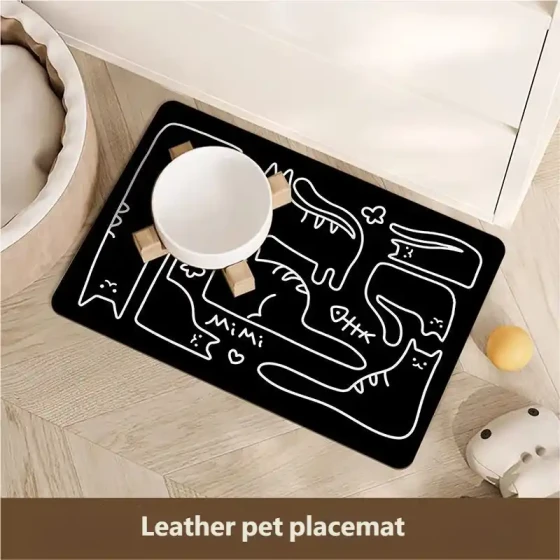Cat Shedding Period_Owner Must-See Guide
Cat shedding is almost an unavoidable topic for all cat lovers, especially during the molting season. The flying cat hair everywhere can make you question your life, feeling like you are raising not a cat but a "dandelion." Don’t panic; in most cases, this is a normal physiological phenomenon. However, as responsible owners, we need to understand the underlying logic to respond calmly and even identify health issues hidden behind shedding symptoms. After all, "there are no cats that don't shed, only owners who want to be lazy."
Simply put, if your cat experiences a noticeable increase in shedding during spring and autumn, usually lasting 1-2 months or even 3-4 months, with normal hair gloss and no skin abnormalities, it is most likely seasonal shedding. This is their self-adjustment to adapt to climate changes and is completely normal.
But if shedding continues abnormally, or if there are bald patches, redness, itching, dandruff, or other symptoms, or accompanied by poor spirit and appetite, you should be alert. This is likely not simple shedding but a warning signal from the body.

Why Do Cats Shed?
Understanding the "why" of cat shedding helps better address the "how." Here, we categorize the causes of cat shedding into two main types:
1. Physiological Shedding: Natural Life Cycle
This is the most common and also the most troublesome type of shedding. Just like humans shed hair, cats' hair has a growth, resting, and shedding cycle.
- Seasonal Shedding: This is the primary reason. Cats have the ability to adjust hair density according to season changes. In spring, to greet the hot summer, they shed dense winter fur and grow thinner summer hair. In autumn, to resist the cold winter, they grow soft insulating undercoat. Indoor cats have relatively stable temperatures, so seasonal shedding may be less obvious or have minor shedding year-round, but usually increases in spring and autumn.
- Juvenile Molting: Kittens are born with sparse fur and experience their first significant molt about 4-6 months old, growing denser adult fur. This process may last around three months.
- Aging Shedding: As cats age, their bodily functions decline, fur becomes more fragile, shedding may increase, and coat color may dull.
- Pregnancy or Heat: During pregnancy, nutritional loss in mother cats may cause increased shedding. Some believe heat periods also affect shedding due to hormonal fluctuations or stress.
2. Pathological Shedding: Body Warning Signs
If shedding exceeds normal physiological range and occurs with other abnormalities, it may indicate health problems requiring attention and veterinary care.
- Skin Diseases and Parasites: Common causes of abnormal shedding. Fleas, mites, and other external parasites cause itching and inflammation; cats scratch and lick frequently, damaging follicles and causing hair loss or bald patches. Fungal infections (e.g., ringworm) also cause localized hair loss with round or irregular patches, along with dandruff and redness.
- Allergic Reactions: Like humans, cats can be allergic to foods, environmental pollen and dust mites, or flea bites, causing itchy, inflamed skin and shedding.
- Malnutrition: Long-term feeding on a single food or nutritionally imbalanced cat food lacking protein, essential fatty acids, vitamins, and minerals needed for hair growth leads to dry, fragile hair that breaks and falls out easily. Excessive salt intake may also cause shedding.
- Endocrine Disorders: Some endocrine diseases, such as hyperthyroidism or hyperadrenocorticism, affect hormone levels, causing symmetrical or large-area shedding, usually without itching.
- Stress and Anxiety: Don’t think only humans shed hair from stress; cats do too! Environmental changes, routine disruptions, or tense relations with other pets or humans can cause stress or anxiety. Cats may overgroom to relieve emotions, resulting in hair loss called psychogenic alopecia, often on front legs, abdomen, or inner thighs.
- Improper Bathing: Frequent bathing or using unsuitable bathing products (such as human shampoos) damages the natural oil protection on cat skin, causing dryness, sensitivity, and shedding.
Owner’s Practical Guide to Managing Cat Shedding
Since shedding is a normal part of cat life, especially in molting seasons, what can owners do to help their cats comfortably get through this period while keeping the "dandelion" at home manageable? The answer: Daily care is key, no shortcuts.
Here are essential tips:
- Brush Often, Brush Daily: This is the most direct and effective way to reduce indoor cat hair. Brush at least 1-2 times daily to remove dead and loose fur, prevent matting, promote blood circulation, and promptly detect skin issues. Don’t underestimate these few minutes; it significantly reduces shedding and enhances bonding. As for brushes, pin brushes, shedding razors, combs, and grooming gloves each have advantages. Choose according to the cat’s fur type and acceptance.
- Internal Hair Removal, Prevent Hairballs: Cats are clean and swallow loose fur during grooming. Moderate hair passes through stool, but excessive hair or poor digestion can form hairballs causing vomiting, constipation, or intestinal blockage, which is dangerous. Pay attention to helping cats pass hair during shedding seasons. Increase water intake, encourage play and exercise to promote gut movement. Some pet hairball products, like hairball pastes and powders, can be used under veterinary guidance. Note some pastes contain mineral oil, which long-term high intake can affect health. Choose natural, mild products and use as directed. Some suggest egg yolk rich in lecithin benefits coat health; feed moderate cooked yolk weekly.
- Provide Balanced Nutrition: Healthy fur needs sufficient nutrition. Ensure balanced daily diet with high-quality cat food containing enough protein, essential fatty acids (Omega-3 and Omega-6), vitamins, and minerals. During shedding or poor coat condition, supplements like fish oil or lecithin may help but consult a vet first.
- Regular Deworming, Internal and External: External parasites are a key cause of abnormal shedding. Even indoor cats can get infected via various routes. Regular internal and external deworming effectively prevents parasite-related skin problems and hair loss. Choose deworming products properly, follow vet guidance, and ensure products are from credible sources.
- Keep Environment Clean: Although it can’t stop shedding completely, a clean home reduces airborne and surface cat hair, alleviating allergies for cats and humans. Use powerful vacuum cleaners with HEPA filters to capture fine hair and dander. Regularly wipe furniture surfaces and use electrostatic mops to collect loose fur.
- Manage Stress, Maintain Good Mood: Stress profoundly affects cat health, including hair condition. Provide a safe, comfortable environment, regular routines, spend time playing, and offer enriching stimulation (cat trees, toys) to reduce stress and maintain good spirits, thereby reducing stress-related shedding.
- Bath Properly, Choose Right Shampoo: Cats are clean animals and usually don’t need frequent baths; overbathing harms them. Depending on the individual and environment, bathing 1-4 times a month is appropriate. Most importantly, use cat-specific bathing products and never human shampoo to avoid skin irritation.
- Watch for Abnormalities, Seek Timely Veterinary Care: If your cat’s shedding suddenly increases markedly, with bald patches, redness, itching, dandruff, crusts, or poor spirit and appetite, don’t ignore it. These may be disease signs such as skin disorders, endocrine diseases, or allergies. The wisest choice is to promptly visit a vet for professional examination, diagnosis, and targeted treatment. Early detection and treatment are crucial for your cat’s health.
Don’t Shave Your Cat—It’s a Misconception!
Some owners shave cats to solve shedding or help them cool in summer. This is actually a big misconception! A cat’s fur not only keeps warmth but also acts as their skin’s first natural barrier against sunlight, dust, and minor physical damage. Shaving destroys this protection, increasing risks of skin infections and sunburn. Unless medically necessary (such as for skin treatment), generally it’s not recommended to shave cats.
In summary, cat shedding is part of cat life. Face it, understand it, and take scientific and reasonable care measures. You and your "fur child" can comfortably and happily get through every shedding period. With attentive care, even with cat hair flying around, it won’t stop the joy cats bring us.
Sources:
- \ vertexaisearch.cloud.google.com
- \ vertexaisearch.cloud.google.com
- \ vertexaisearch.cloud.google.com
- \ China News, "The Cat is Shedding Again: There Are No Cats That Don't Shed, Only Lazy Owners"
- \ vertexaisearch.cloud.google.com
- \ vertexaisearch.cloud.google.com
- \ vertexaisearch.cloud.google.com
- \ vertexaisearch.cloud.google.com
- \ vertexaisearch.cloud.google.com
- \ vertexaisearch.cloud.google.com
- \ vertexaisearch.cloud.google.com
- \ vertexaisearch.cloud.google.com
- \ vertexaisearch.cloud.google.com
- \ vertexaisearch.cloud.google.com
- \ Sina, "Knowing Little About Your Pet: How Long Has the Cat Been Shedding?"
- \ vertexaisearch.cloud.google.com
- \ vertexaisearch.cloud.google.com
- \ vertexaisearch.cloud.google.com
- \ vertexaisearch.cloud.google.com
- \ vertexaisearch.cloud.google.com
- \ vertexaisearch.cloud.google.com
- \ vertexaisearch.cloud.google.com
- \ Bool Pharmaceutical, "How Often to Feed Cat Hairball Paste"
- \ What’s Worth Buying, "No Ads: First Time Raising a Cat? 2023 Nanny-Level Scientific Cat Raising Guide"
- \ Apple Podcasts, "Knowledge and Practice - Canal"


-560x560.webp)


